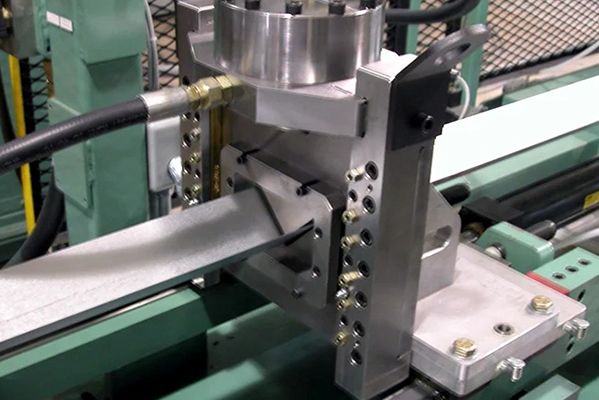Navigation Menu
Contact Us
- Email:
- info@wxavatar.com
- Address:
- Yurong Village, Yuqi Street, Huishan District, Wuxi, China.
Release Date:Mar 27, 2025 Visit:56 Source:Roll Forming Machine Factory
The Three Major Advantages of Steel Frame System Equipment
In an era where construction demands speed, sustainability, and resilience, steel frame system equipment has become a game-changer. This technology encompasses machinery and tools designed to fabricate, assemble, and install steel structural components, replacing traditional methods like wood or concrete framing. By leveraging automation, precision engineering, and innovative design, steel frame systems offer transformative benefits. Below, we explore the three major advantages that make this equipment indispensable in modern construction.
1. Unmatched Speed and Efficiency
Steel framing equipment streamlines the construction process, drastically reducing project timelines.
Prefabrication Capabilities: Advanced roll-forming machines and automated assembly lines produce standardized steel components (studs, tracks, joists) off-site. These prefabricated parts arrive ready for quick installation, cutting on-site labor by up to 50%.
Automated Precision: Computer-aided design (CAD) software integrates with machinery like laser cutters and robotic arms, ensuring components fit perfectly during assembly. This eliminates errors and rework, accelerating project completion.
Weather Resilience: Unlike wood, steel components are unaffected by moisture or temperature changes, allowing construction to proceed uninterrupted in diverse climates.
For example, modular steel buildings can be erected in weeks rather than months, making this system ideal for urgent housing projects or commercial developments.
2. Superior Durability and Structural Integrity
Steel frame system equipment produces components that outperform traditional materials in strength and longevity.
Resistance to Environmental Threats: Steel is impervious to pests (termites), rot, and mold. Equipment such as galvanizing machines coats steel with protective layers, enhancing corrosion resistance for harsh environments.
Fire Safety: Steel framing does not combust, providing critical fire resistance—a key advantage for high-rise buildings and industrial facilities.
Load-Bearing Capacity: Steel’s high strength-to-weight ratio allows for longer spans and taller structures without compromising stability. Heavy-duty equipment like hydraulic presses and CNC beam cutters ensure components meet exact engineering specifications.
These qualities make steel framing ideal for disaster-prone areas, where structures must withstand earthquakes, hurricanes, or heavy snow loads.

3. Sustainability and Eco-Friendliness
Steel framing equipment supports the global shift toward green construction practices.
Recyclability: Steel is 100% recyclable without loss of quality. Machinery like shredders and electric arc furnaces repurpose scrap steel into new components, reducing reliance on raw materials.
Minimal Waste: Precision cutting and CAD-guided manufacturing optimize material usage, slashing waste by up to 30% compared to traditional framing.
Energy Efficiency: Steel-framed buildings easily integrate insulation and renewable energy systems. Light-gauge steel (LGS) equipment produces slim profiles that maximize interior space while improving thermal performance.
Projects using steel framing often qualify for certifications like LEED or BREEAM, appealing to environmentally conscious clients and investors.
Challenges and the Path Forward
While steel framing equipment offers clear advantages, challenges like higher initial costs and specialized labor requirements persist. However, innovations are addressing these gaps:
Cost Reduction: Advances in automation and modular design are lowering production expenses.
Training Programs: Industry partnerships are expanding access to skilled technicians for steel frame assembly.
Hybrid Systems: Combining steel with materials like cross-laminated timber (CLT) enhances affordability and sustainability.
Conclusion
The three pillars of steel frame system equipment—speed, durability, and sustainability—are redefining modern construction. By enabling faster project delivery, creating resilient structures, and aligning with eco-friendly goals, this technology is not just a trend but a long-term solution for the built environment. As automation and green engineering evolve, steel framing will continue to shape skylines worldwide, proving that strength and sustainability can go hand in hand.